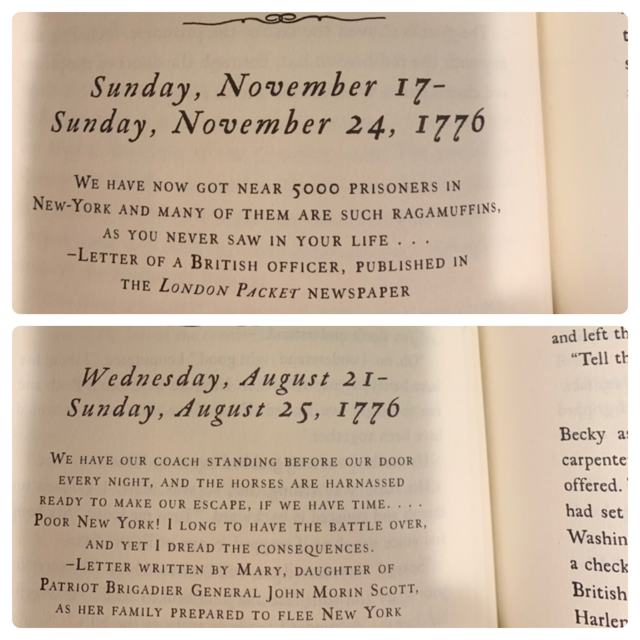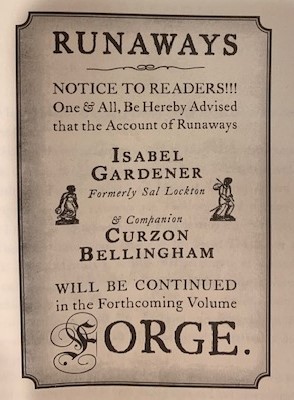
Eyes on This Book: “Chains” by Laurie Halse Anderson is an impeccably written and researched historical-fiction book first published in 2008 by Simon & Schuster. This book has earned several awards including the Scott O’Dell Award for Historical Fiction, ALA Best Books For Young Adults Award. This piece of literature was also nominated as a finalist for the National Book Award and is counted among the ALA Notable Children’s Books. Check out more accomplishments here: http://madwomanintheforest.com/book/chains/
Book Type: historical fiction
Overview of the Author & Illustrator: Laurie Halse Anderson was born on October 23, 1961 in Potsdam, New York. Growing up, Anderson was always interested in reading, especially science fiction. She became a journalist and eventually ventured into writing novels and children’s books. She has written several novels, pieces of non fiction, and children’s books. She is most known for her writing of diverse and social-justice focused texts including the books, Speak and Chains, and she has won several awards for it as well as her other works. She lives in New York with her husband and children.

“You have to know what you stand for, not just what you stand against.” -Laurie Halse Anderson, n.d.
Summary: Chains is a piece of historical fiction about a thirteen year old slave girl and her journey to find freedom, both literally and metaphorically. Isabel is sold to a Loyalist New York family during the American Revolution. As she befriends a fellow slave/soldier, Curzon, she becomes a spy for the Patriots and attempts to fight back against her owners and the country that traps her.
Chains as a Work of Historical Fiction: Tunnell, Jacobs, Young, and Bryan (2016) tell us that traditional history text books are not effective at teaching history to children. What is effective, however, what is effective at helping children feel connected to the past is through the use of stories and narratives (Tunnell, Jacobs, Young, & Bryan, 2016). This sentiment is accurately captured in the book, Chains. Chains is a “story of historical events happening before the life of the author” (Tunnell, Jacobs, Young, & Bryan, 2016). Laurie Halse Anderson, as a modern author, was obviously not alive at the time of the American Revolution. What is evident, though, is that considerable time was spent and research conducted to accurately portray a slave’s point of view during the American Revolution in New York.
To add to the credibility of her writing, Laurie Halse Anderson brilliantly includes excerpts of historically-accurate and relevant texts at the beginning of each chapter. These snippets of text allow the reader to truly connect with both the fictional characters of the story as well as the real-life figures experiencing what is read about across the pages of the book. Additionally, the incorporation of primary sources and quotes allows for other perspectives on the same events being discussed to shine through, providing additional credibility outside of the narration of Isabel.

The inclusion of an Appendix with probably questions and ready-made answers at the close of the text adds to the reader’s experience. Assuming that many readers of Chains will be middle readers or older, they may or may not have extensive background knowledge on the Revolutionary War and/or the slave experience. Providing even more information in a question-answer format once again supports the reader’s understanding of history.
My Judgment of Chains: Historical fiction is and should be assessed based on similar criteria of other books: plot, characters, style, craft, etc. (Tunnell, Jacobs, Young, & Bryan, 2016). Anderson eloquently creates and develops each character, especially the protagonist Isabel and the “villain,” Madam Lockton. Through Isabel’s disappointment in leaving Miss Mary Finch’s place, to losing her sister Rachel, to being beaten and disheartened as a slave of the Locktons, to spying for the Patriots and befriending Corzon, the connection between the reader and Isabel intensifies and deepens as the book plays out. Using what seems to be historically-accurate language jargon, Anderson creates a kinship between the slave reality and the reader.

Chains is a work of fiction, but is based on actual events that took place during the Revolutionary War like the capture of Fort Washington in New York, attempted assassinations of George Washington, and the reference to Thomas Paine’s, Common Sense. Anderson seamlessly intertwines historical references into the experiences of the characters, the action that takes place, as well as the setting of the story. The characters experience the trauma of the time period while expert and detailed narration is provided to the reader.

Both the title and the cover art of this book perfectly represent the theme of the book, fighting for freedom, attempting to shed chains. The irony is not lost on me that Isabel is a slave, presumably to be enslaved her entire life, yet she is spying and fighting for victory on behalf of the Patriots. She herself might not ever be freed, yet she sees the larger picture and the possibility of freedom for those to come. Her tenacity, bravery, and selflessness are evident at every turn!
References:
- Anderson, L. H. (2008). Chains. New York, NY: Simon & Schuster.
- Anderson, L. H. (n.d.) . Mad Woman in the Forest. Retrieved June 16, 2019 from http://madwomanintheforest.com/about-the-author
- Tunnell, M. O., Jacobs, J. S., Young, T. A., & Bryan, G. (2016). Children’s literature, briefly (6th ed.). Upper Saddle River, NJ: Pearson.

I agree with you about how well the historical quotes at the beginning of each chapter really added to the understanding of the time period and enhance the understanding of the setting and time period.
LikeLike